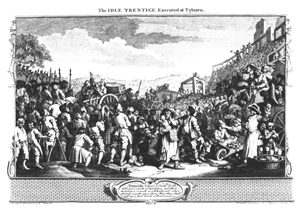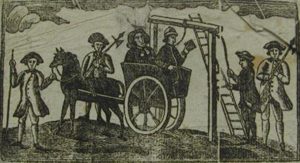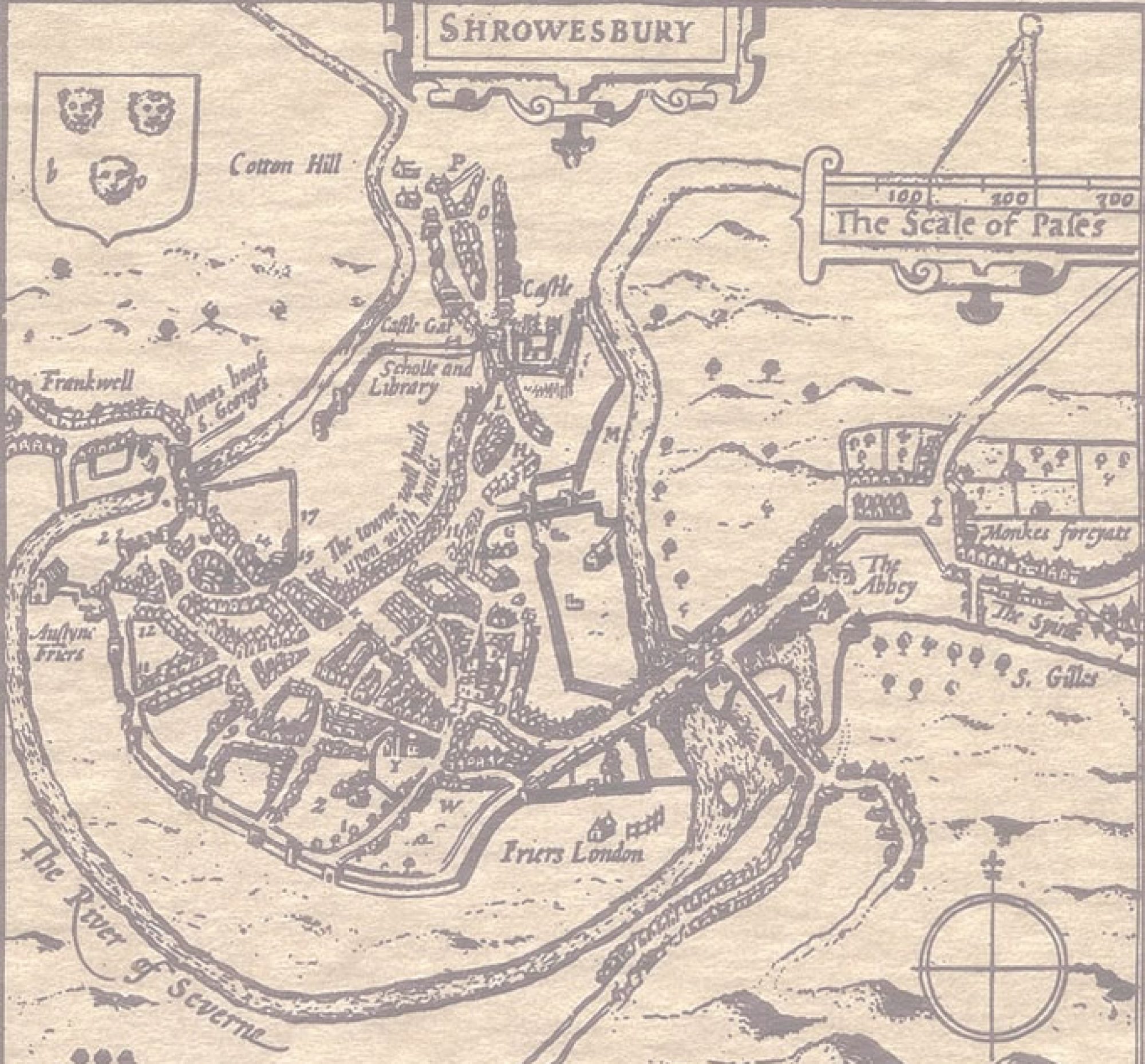
Ditherington Road runs between St Michael’s Street and Heath Gates in the north of Shrewsbury. The area of Ditherington grew rapidly in the early nineteenth century after the opening of the Flax Mill, but the origin of the name is obscure. The common belief has long been that it is derived from the word ‘dither’, whose original meaning was to shake or quake. This describes the public hangings that used to take place at Old Heath, just off Ditherington Road, before the opening of the new prison in 1793.
In the eighteenth and early nineteenth centuries the death penalty was the sentence for many quite minor crimes, though often the sentence was commuted to imprisonment or transportation. Hangings took place in public because it was felt that they acted as a deterrent to other would-be offenders. However, they often became just a form of entertainment, watched with gruesome interest by all ages and social classes.

The ‘gallows’ may have been purpose made or just a suitable tree. The prisoner was made to stand up on a cart, and the rope was fastened round his neck and pulled as tight as possible. The cart was then driven away, leaving the prisoner hanging not far from the ground. Unconsciousness might have been almost instantaneous due to pressure on the arteries in the neck, or the person might have been conscious for several minutes until asphyxiation occurred. Even though the brain might be dead through lack of oxygen, the heart could continue to beat for many minutes, and there were usually convulsive movements of the body and limbs (described by one local observer as ‘sharp and severe struggles’). In everyday language these were known as ‘dithering’, and were probably caused by nervous and muscular reflexes.

The prisoner was usually left hanging for at least an hour, when it was assumed that death had occurred, and the body was cut down. Occasionally, however, things did not quite go according to plan, as in the famous case of Margaret Dickson in 1813. This unfortunate lady from Musselburgh near Edinburgh was convicted of the murder of her newborn illegitimate child, despite rather flimsy evidence. She was hanged in the usual way, and then placed in a coffin for transporting back to her home town. Part way there the men in charge of the coffin stopped for some liquid refreshment. The story of what happened next is told in a contemporary pamphlet – ‘While they were drinking, one of the men thought he saw the lid of the coffin move, and, going towards the cart, uncovered it, when he could perceive the woman to move, and she arose upright in her coffin, upon which he and the others took to their heels, almost killed with fear…Within an hour afterwards she was so well recovered as to be able to go to bed. Next morning she walked home to Musselburgh. According to [Scottish law] every person upon whom the judgment of the court has been executed has no more to suffer, but must be for ever discharged. Another maxim in the same institution is that the executed person is dead in law, so that the marriage is dissolved. This was the case with Mrs Dickson, for the king’s advocate could not pursue her any further…and her husband, being a good-natured man, was married to her a few days later.’
